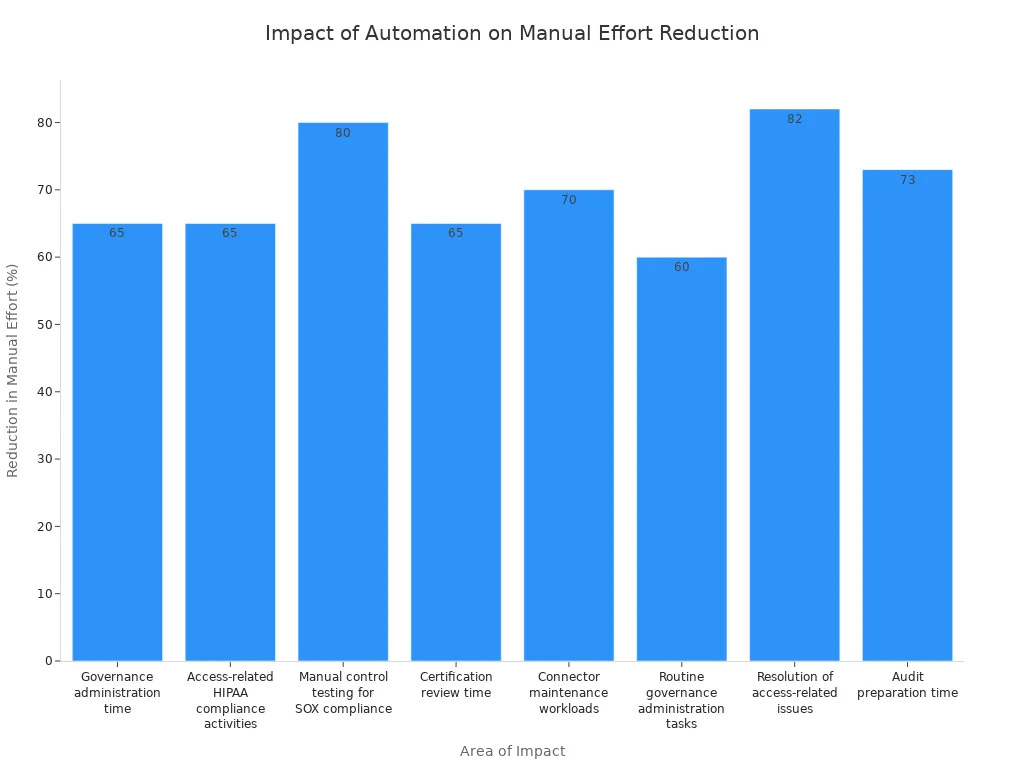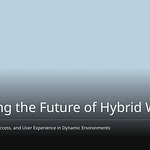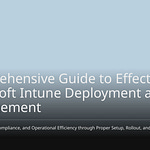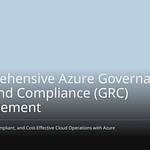To effectively enforce governance, it’s crucial to adopt a supportive approach rather than being perceived as a constant barrier. This involves collaborating with stakeholders and demonstrating the inherent value that regulations bring. By doing so, rules become integrated into the company’s objectives, rather than being seen as mere obstacles. Preparedness fosters trust and reduces audit costs, which in turn strengthens your negotiating position and encourages supplier cooperation. Effective leaders ensure that governance actively contributes to the company’s success. This modern perspective emphasizes collaboration and value creation, moving beyond a sole focus on strict compliance.
Key Takeaways
Talk and teach early about rules. This helps people understand why rules are important.
Work with teams to make rules. This makes rules better and helps everyone follow them.
Use technology to make rules easy to follow. This helps automate tasks and manage risks.
Show how rules help the company. Measure success by how rules improve business, not just by following them.
Understanding Negative Perception to Enforce Governance
Root Causes of Negative Perception
You often face pushback. This happens when you make rules. People see this as bad. It does not happen for no reason. Many things make teams see rules as a problem. Bad talking is a main reason. When news is not clear, people get confused. Strict ways of doing things also make people mad. Teams feel stuck by rules. These rules seem unfair or too hard. Focusing on punishments, not help, pushes people away.
Bad sharing of news
Not working well together
Slow work
Hurts company growth
These talking problems make teams not work well. They also make work slow. In the end, they hurt how the company grows. You must fix these main problems. This builds trust. Without clear, steady talking, making rules will always be hard.
Business Costs of Being a Blocker
Your rules team can stop things. This costs the business a lot. This idea stops new ideas. Teams do not want to share new thoughts. They think rules will stop them. Project times also get longer. Things get slow. Teams go through hard steps. Or they wait for answers. This makes the whole company slow.
People try to avoid rules. They try to go around them. This makes risks higher. It lowers who is in charge. You miss chances to stop risks early. Instead, you fix problems after they happen. This way of fixing things hurts how well your company works. It also hurts big company goals. People lose trust. Good leaders must change this idea. You need to show how rules help. They do not stop progress. This makes better results. It makes your company strong for a long time.
Talk and Teach Early
You must build connections. Do not build walls. Use good talking. This makes your team a helper. You help the business win. You do not just make rules.
Talk to People Early
Talk to people early. Do this when you plan projects. You can make plans together. Do not just force rules. Make the project goals clear. Say what it is for. Tell what you want to happen. Explain how you will know it worked. This helps with all rule choices. Find the main people involved. Find those who will lead. Find people whose ideas are key. This gets support. It shows who to ask for help. Make roles clear. Say what each person does. This stops confusion. Make groups for big things. Like for risks or quality. This helps them watch closely. Write down how things work. Explain how choices are made. Tell how problems are fixed. Say how changes are approved. This guides your team. Make ways to share news. Say how and when to share updates. This keeps things open. It helps people work together. Have times to check and get ideas. Check project progress often. See if the rules work well. Change things if needed.
The RACI model is a key tool. It makes roles clear. This stops confusion. It helps when making choices. It makes sure everyone knows their job. It shows who is in charge. It shows who must do the work. It shows who to ask for ideas. It shows who needs to know. This stops work from being done twice. It makes talking better. It makes sure the right people get news. They get approvals at the right times. It makes choices better. It gives clear jobs. This makes rule choices faster. It helps with rules and risks. It gives a clear way to make choices. These choices follow rules. It makes projects work better. It gets the right people involved. They are involved at the right time. This stops delays. Putting rules in early helps a lot. It makes projects work better. It makes them more likely to win. It sets up how to make choices. It sets up who is responsible. It sets up how to handle risks. This is all before work starts.
Talking early helps a lot. You connect better with everyone. You learn what they need. You learn their goals. This builds stronger ties. It gets more support. It leads to better results. You set better goals. You get more people to agree. You learn what they want. This makes everyone more responsible. They track progress. They track results. You make better choices. You use many different ideas. You use different skills. This builds trust in your group. It makes fair rules stronger. It helps people follow rules more. People feel their ideas were heard. You find good ways to make rules. You make sure rules use facts. This gets people to agree. It gets support for the rules.
Show Why Rules Matter
Say why you have rules. Explain them. Talk about less risk. Talk about working better. Talk about being smarter. Use good ways to talk. Be open and honest. Listen to what people say. This is key when choices affect them. Explain why choices are made. Do this before, during, and after. Change how you talk. Change your words. Do this for each group. Change your style. Change your leadership. Do this for each person. Do this for each problem. Use ways to get people involved. Make them easy to use. This gets more people to join. Show how rules keep things safe. Show how they make work smooth. Show how they help reach goals. This changes how people see you. You help them win. You do not stop them. This builds public trust.
Ongoing Learning Programs
Make easy training. Make helpful tools. These help teams learn rules. They help them use rules. Ongoing learning helps a lot. Especially for rules, risks, and following laws. It helps people understand. It helps them follow rules. Websites offer special learning paths. They offer certificates. They offer tools. These help people and teams. They help them handle new rules. They help lower risks. They help set up good rules. These programs make rules stronger. They make them work better. They teach special knowledge. They teach best ways to do things. This is for many rule areas. Like AI, cyber risk, and board rules. These programs help leaders. They help workers. They help them get better skills. They help make work better. They make sure things are watched closely. This makes more people follow rules. It makes everyone understand rules better.
You can get over 200 learning tools. These include short classes. They include certificates. They include guides. They include videos. They are put into learning groups. These cover AI, cyber, rules, and board work. These tools are for leaders. They are for board members. They are for workers. They help groups stay ahead of new rules. You learn how to handle risks. You learn about chances. This is for cyber, AI, and green issues. These programs fit team needs. A library of learning and guides helps teams. It helps at any stage of their rule journey. It covers topics for many groups. This saves time and money. It puts all training in one place. It puts learning and memberships in one place. It gives good advice. It helps build rule processes. This makes work smoother.
These programs give key tools. They help with AI problems. They help with AI chances. This includes ethics. It includes rules. It includes laws like the E.U. AI Act. They make sure AI is used well. They make sure it is watched. They use checklists and classes. They help people understand how to protect groups. This is from cyber threats. They cover cyber rules. They cover risk handling. They cover what to do in a hack. They offer a special practice game. This is for boards and leaders. They offer a special library. It makes rule skills better. It makes practices better. Good tools and expert guides help boards work well. They cover key topics. Like board meeting notes. Like rules for non-profit boards. Like training new board members. This ongoing learning helps people follow rules. It makes sure your group changes. It changes for new problems. It keeps high standards.
Collaborative Governance Frameworks
You help your teams. You do not tell them what to do. You build ways to work together. These ways help everyone win.
From Gatekeeper to Enabler
Your governance team can change. You stop blocking things. You start helping teams. You guide them. You help them find good answers. This changes how people see you. You become a helper.
You use new governance ideas. For example, use the Mandate system. This is for AI actions. It safely guides AI. It does not just control people. You use special proof for trust. You use digital contracts. These cannot be changed. They say how to buy things. They say who can approve. They cover approval and trust. They cover who is responsible. This is for AI agents. You make rules for digital policy. ‘Intent Mandates’ set limits. They approve spending for AI. You make sure records cannot change. ‘Cart Mandates’ make final receipts. This stops AI mistakes. You move to safe contracts. You stop fixing problems later. You use a special system. This is for big AI deals.
You make app security fit. It fits with fast development. You update security ways. These work with new tech. They work with cloud building. You do not use old ways. You move to active security. You put security in early. This stops security delays. You give tools to developers. You give them security steps. These do not slow them down. This makes security part of the work.
You do governance well. You do it with care. You check, guide, and watch. This builds trust. It shows governance helps. It helps things keep going. It makes things strong. You show its worth. You want teams to take chances. They think hard. They stay quick. They learn from mistakes. You use the ‘Three D’s of Leadership’. First, Decide. Make choices. Especially when things are unclear. Let staff make daily choices. Second, Delegate. Give power to staff. Make roles clear. Help them do well. Third, Disappear (Enable Autonomy). Give tools. Set goals. Give work. Remove problems. Do not stop staff. Let them find success. Still watch what they do.
You move from checking to guiding. You do more than make plans. You teach about controls. You learn about business. You are there for choices. You make a risk-aware culture. You do this by talking clearly. You lead well. You listen actively. You do not just use rules. You add long-term goals. You add big risks. You put your role where things meet. This is for ESG, plans, and investors. You add long-term goals to risk plans. This shapes daily choices. You use data and care. You use data to check controls. You find weak spots. You build trust by being open. You are honest. You share responsibility.
Agile Governance Principles
You put governance into fast development. This makes governance flexible. Agile governance mixes speed with control. It makes sure things are good. It makes sure rules are met. Key ideas are working together. Being open. Always getting better. Focusing on what customers want.
You let teams make choices. They work within limits. You make clear governance rules. You share them openly. You use constant feedback. This helps change governance fast. You pick flexible governance plans. These fit project size. They fit how hard it is. They fit the situation. Learning programs are key. They help teams learn fast ways. They learn governance ways. You match governance with Lean and Agile. This puts customer value first. It stops waste. You automate governance steps. This makes work smooth. It makes things clear. It gives quick info. You build a culture of teamwork. Trust and flexibility. This helps balance speed and control. You make governance a helper. It manages risks. It matches company goals. You measure results. Do not just measure steps. This focuses on outcomes. You set balanced goals. These look at speed and control. This makes things better. It makes work faster.
Feedback Loops and Policy Development
You make ways for people to share ideas. This helps them feel ownership. It makes things better. You help people work together. This is for making rules. You make shared jobs clear.
Many ways help people share ideas. These include small groups. Surveys. Talks. Community panels. You can use public talks. Forums. Online meetings. Public comments. Town halls. Online rule drafts. Public webinars. Workshops. Special polls. Citizen groups. Building agreement. Shared choices. Citizen juries. Given choices.
The International Association of Public Participation shows how people can be involved. It goes from less to more.
Inform: Give facts. Use papers. Websites. Open houses.
Consult: Get ideas. Use public comments. Small groups. Surveys. Public meetings.
Involve: Work with people. Use workshops. Special polls.
Collaborate: Partner with people. Use citizen groups. Build agreement. Share choices.
Empower: Let people make final choices. Use citizen juries. Given choices.
Advisory groups are important. They give constant ideas. This is for making rules. For example, in Michigan, early talks led to a BioTrust board. This board now advises on BioTrust rules. It gives a constant way for ideas.
Feedback loops are steps. A system’s output changes its future. This makes it stronger or fixes it. Knowing feedback loops is key. You make good rules. They show how rules change. This is based on their effects. They help you find what to make stronger. Or what to fix. This gets desired results. Adding feedback loops to rule design. This makes governance better. It makes it more flexible. They help change rules. They show how rules affect actions. This makes governance better. Rules become stronger. They respond better. This is through checking and changing. This process makes constant improvements.
But some think ‘feedback loop’ thinking is too simple. It may not show how complex government is. It can lead to ‘fake involvement’. This is not real responsibility. People’s roles might be small. They give ideas after rules are made. Focusing only on technical feedback loops. This can miss old ways. It can miss election parts. These are in bigger responsibility systems. Dangers include being too simple. The idea can ignore history. It can push ‘easy involvement’. This is not real involvement. This can hurt efforts to make government better. You must balance these ideas. This is to enforce governance well.
Leveraging Technology to Enforce Governance
You can make governance smarter. It can be less pushy. Use tech solutions. These tools cut down on hard work. They make things feel less difficult. They help you enforce governance well.
Automation for Compliance
Auto tools make rules easy to follow. They cut down on checks by hand. This makes following rules steady. Platforms like Akitra’s AI tools help. They collect proof by themselves. They watch many rules all the time. This includes SOC 2 and GDPR. These tools also check risks. They find weak spots. Auto tools make sure rules are followed. This is true for all IT systems. They change rules for new laws. You get reports right away. You also get constant checks.
Automation makes following rules like code. It changes governance. It is not a past task. It is always on. Rules follow themselves. Bad data shows up fast. Audit trails build by themselves. No more papers or hand checks.
Automation puts rules into the work. It needs digital signs for OKs. It handles document life. This shows accountability. You do not search for papers.
Data-Driven Risk Management
You use data to find rule problems. Find them before they get big. This helps you act early. Data tools watch rule changes. They do this all the time. They tell staff about new rules. This helps teams change fast. You lower risks of not following rules. You use smart risk guessing. This sees and fixes rule risks. You use old data to find patterns. You fix issues before they grow.
Machine Learning (ML) guesses patterns. It finds odd things. ML checks deals for fraud. In cyber, ML finds strange acts. Natural Language Processing (NLP) checks text data. It finds risks like bad fame. It finds rule breaks. Robotic Process Automation (RPA) does repeated tasks. It makes rule steps smooth. Computer Vision (CV) watches production lines. It finds flaws or dangers fast. This early oversight makes your performance better.
User-Friendly Governance Platforms
Easy screens give quick rule access. They make sending requests simple. They track rule status. This makes things clear. Good platforms manage user life. They set up users automatically. Role-Based Access Control (RBAC) makes access easy. It limits who sees private data. Audit and rule tools track logins. They watch access changes. This finds security breaks.
These platforms watch user actions. They track what users do. This helps with security early. Data sorting and risk checks group data. They group by how private it is. This sets strict access rules. Rule and audit reports make detailed papers. They show data governance. Auto access checks make access reviews smooth. Rule enforcement and break watch set rules. They make sure rules are followed. They watch for breaks. This makes things work better. Your leadership can make smarter choices. They use these tools.
Measuring Success and Demonstrating Value
You must show what your rules do. Do not just look at how many rules you follow. Look at how they help the business. See if people are happy. See if things work better. This makes your rules fit with company plans. It fits with goals.
Defining Governance KPIs
You need clear ways to check rules. Track your Value Realization Rate. This shows how many data projects work. It shows if money spent helps. Measure Time-to-Value. This tracks how fast data projects give results. It shows how quick you are. Check your Data-Driven Decision Rate. This shows if you use data for big choices. You also track Policy Adherence. This makes sure things work right. Watch Incident Reporting and Response Time. This helps fix problems fast. Your Training and Awareness Completion Rate helps people learn. Check Compliance Training Effectiveness. This helps workers do well. Track Audit Findings and Remediation Time. This shows you want to get better. Watch Third-Party Compliance Performance. Do this by checking partners. Check Data Privacy Compliance. This keeps private data safe. Whistleblower Reports find problems. They show you are open. Last, check the ROI of Compliance Tools. This helps use money well. These checks help your rules work better. They make services better.
Communicating Impact and Success
Show how rules help projects. Show how they lower risks. Project rules find dangers. They make plans to fix them. This keeps projects on time. It keeps them on budget. It keeps them good. It helps make choices. It gives a clear way for people to work together. They agree on goals. They make smart choices. They fix fights. They pick what is important. Rules make things open. They make you responsible. Checking often finds problems early. It helps fix them fast. Making risk plans finds risks. It checks them. It fixes them. This stops projects from failing. Watching and checking track project steps. It finds risks. It fixes them. This means checking how well things work. It means talking well for fast choices. You must have clear ways to talk. This is for all parts of the company. This makes sure everyone agrees. Everyone helps with big choices. Regular talks keep things moving. Make jobs clear. This stops doing work twice. It lets teams focus. Use a system to check rules often. Ask everyone for ideas. This finds ways to get better. It finds new ideas. Find possible risks early. Plan to fix them. This keeps the company safe. It builds trust. Train leaders often. This keeps them updated on best rules. It helps them get better. It helps them change. To make rules fit company goals, talk openly. Talk between leaders and rule makers. This sets main goals. Rules and steps then hold these goals. They are main guides for how to act. Rules must also change. They change as goals change. This means checking rules often. This makes sure they still fit. A mid-sized tech company had rule problems. They made work smoother. They made goals fit better. They focused on clear talks. They made jobs clear. Regular talks helped them change fast. This showed how good rules work. Your talk plan needs clear goals. Think about short and long-term results. Rules must be clear. Know who you are talking to. This helps make the right messages. Use many ways to talk. This reaches many people. A full plan makes sure talks are steady. Make messages clear. They should fit your goals. Pick the best time to talk. Pick how often to talk. This helps you talk well. It makes services better. It makes work better. Your customer service helps the company. It makes work better. Your customer service builds strong ties. This makes work better. Your customer service helps work be fast. This makes work better. Your customer service makes you more responsible.
Good rules help your group win. You help teams. You do not just make rules. Work together. Show what is good. Use tech to make things easy. Manage risks early. Your team becomes a helper. Not a problem. You make growth safe. You make it fast. People will like your rules. You help your group do well.
FAQ
How can you change how your team sees rules?
Talk openly. Start early with project plans. Explain why rules exist. Show how rules help. Do not just give orders. Work together to build trust.
What tech is best for good rules?
Auto tools are key. They make rule tasks easy. They cut down on hand work. This lets your team do more. Data tools also help with risks.
How do you know if your rules work?
Do not just count rules followed. See how business improves. Check if people are happy. Look at how much faster things get done. Use numbers like Value Realization Rate. Show how rules help projects. Show how they lower risks.
Can fast rules work in big old companies?
Yes, they can. Add rules to fast work plans. Make rules flexible. Make them change often. Work together. Always make things better. This helps balance speed and control.










